S&I In-Service Meetings: A Global Perspective
Po Nien (Felipe) Chou
Po Nien (Felipe) Chou, "S&I In-Service Meetings: A Global Perspective," Religious Educator 17, no. 3 (2016): 82–99.
Po Nien (Felipe) Chou (ChouPN@ldschurch.org) was a religious educator and manager of the Office of Research for the Seminaries and Institutes (S&I) of The Church of Jesus Christ of Latter-day Saints when this article was published.
 Po Nien (Felipe) Chou instructs volunteer seminary and institute teachers in Taichung, Taiwan.
Po Nien (Felipe) Chou instructs volunteer seminary and institute teachers in Taichung, Taiwan.
In-service meetings have facilitated the opportunity for the Seminaries and Institutes (S&I) to teach and train both full-time and volunteer teachers for many decades. These S&I in-service meetings would expand from Utah to the rest of the United States and then to various locations outside the United States. How are these in-service meetings operating and functioning in various parts of the world? What are the perceptions of S&I leaders and teachers regarding how these in-service meetings assist them to achieve the S&I objective and goals? This article examines these questions from a global perspective. It also considers a global perspective of S&I leaders and teachers on how these in-service meetings assist them to achieve the S&I objective and its purpose, “To help the youth and young adults understand and rely on the teachings and Atonement of Jesus Christ, qualify for the blessings of the temple, and prepare themselves, their families, and others for eternal life with their Father in Heaven.”[1]
According to Administer Appropriately: A Handbook for CES Leaders and Teachers, training “intends to improve an individual’s ability to apply correct principles and to use fundamental skills.” In addition, in-service training “promotes professional growth and develop[s] . . . individual potential . . . help[ing] leaders and teachers better understand and meet the objectives of religious education and fulfill their commission to live the gospel, teach effectively, and administer appropriately. Training also provides renewal, motivation, and helps foster cooperative associations.”[2] Nevertheless, “for training to be complete, leaders and teachers should evaluate whether the training has fulfilled the intended objectives or goals.”[3]
Methods
The S&I Office of Research, Evaluation, and Assessment (REA) conducted an evaluation to provide a global perspective of in-service meetings in 2011. A purposeful cluster-convenience sample was utilized to identify 18 S&I areas selected for this study. Qualitative data through telephone or online interviews were gathered from 40 S&I personnel in selected cluster areas (see table 1). These interviews were 20–40 minutes long and conducted in English, Mandarin Chinese, Portuguese, or Spanish. The S&I employees interviewed for this study came from a wide range of S&I assignments (e.g., area director, assistant to the area director, regional/
 Table 1: Source of interview and survey data
Table 1: Source of interview and survey data
Thereafter, an online survey was developed and administered to gather additional quantitative data. A total of 12 S&I released-time teachers or principals and 62 S&I country directors or coordinators in the 18 S&I areas were selected and received the online survey. These 74 S&I employees were invited to complete the survey, as well as distribute the survey and solicit responses from the 3 to 4 full-time or stake-called teachers they supervised. The online survey was available in English, Portuguese, and Spanish to facilitate access to additional stake-called volunteer teachers. Participants received an email with a link to the online survey in 2011, followed by a reminder email to complete the survey. The S&I Office of REA received a total of 148 responses to the online survey from an estimated 260 potential survey participants. Of the 148 responses, there were 66 S&I employees and 82 stake-called teachers (or 45 and 55 percent respectively). Interview and survey data were organized, compared, and analyzed, followed by a report to present findings and recommendations.
How are Faculty In-services Operating and Functioning at Various S&I Programs?
Frequency of In-Service Meeting
Worldwide, S&I employees typically had area in-service meetings 1–2 times per year, cluster or regional had them 2–3 times per year, and local faculty had them 5–6 times per year (see table 2). It was typical for S&I employees in Utah to have in-service meetings more frequently than others in the United States and Canada, and in-service trainings were also more frequent inside the US and Canada rather than outside. For stake-called teachers, in-service trainings were provided to them once a month in most cases.
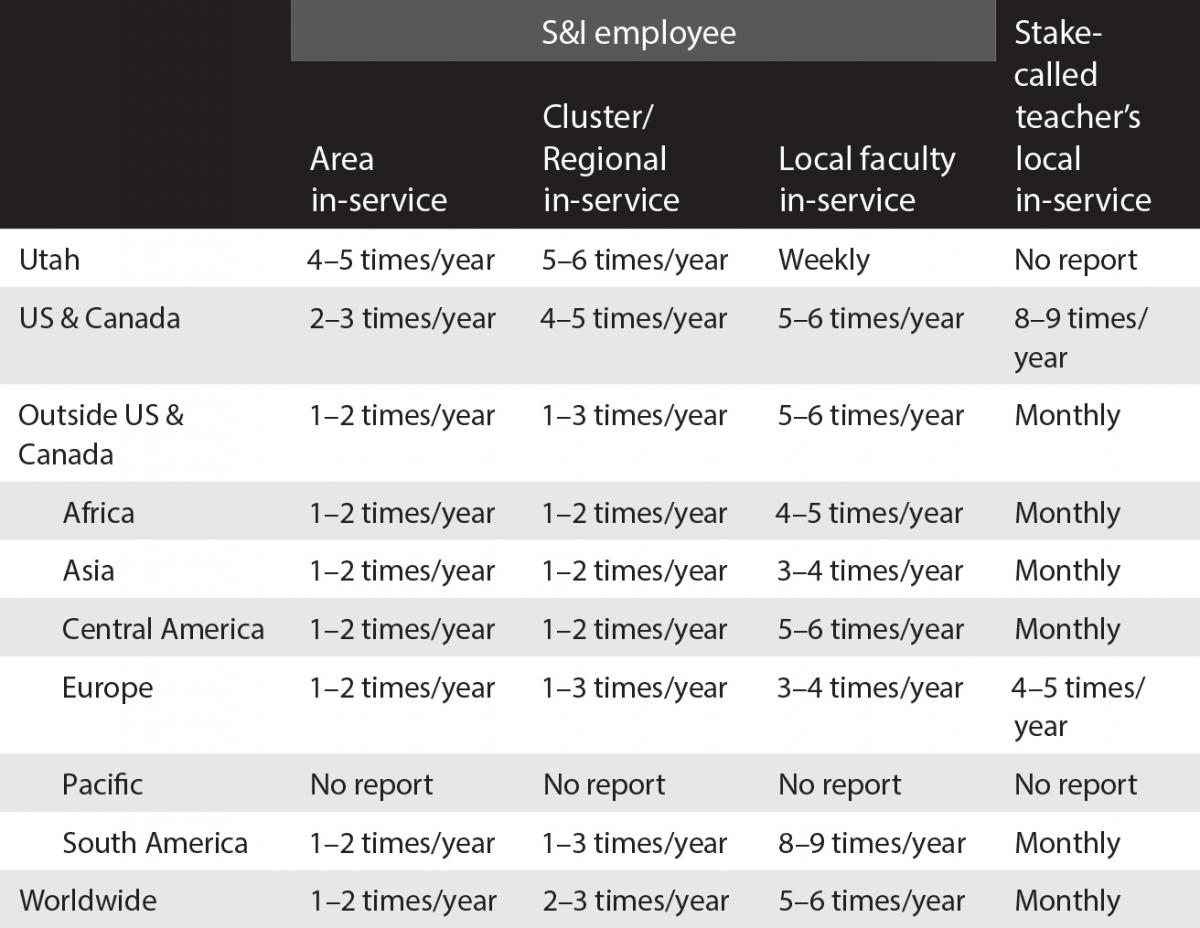 Table 2: Frequency of in-service meetings
Table 2: Frequency of in-service meetings
Frequency of In-Service Attendance
Overall, the frequency of in-service meeting attendance was higher for S&I employees than for stake-called teachers, and higher inside the US and Canada rather than outside(see table 3). Frequency of in-service meeting attendance for S&I employees was highest in Utah (100 percent), followed by other areas in the US and Canada (82–92 percent), and lowest outside the US and Canada (78–87 percent). Frequency of in-service meeting attendance for S&I stake-called teachers was also higher inside the US and Canada than outside (94 percent and 77 percent respectively). In addition, there was much more variability for stake-called teachers outside the United States and Canada.
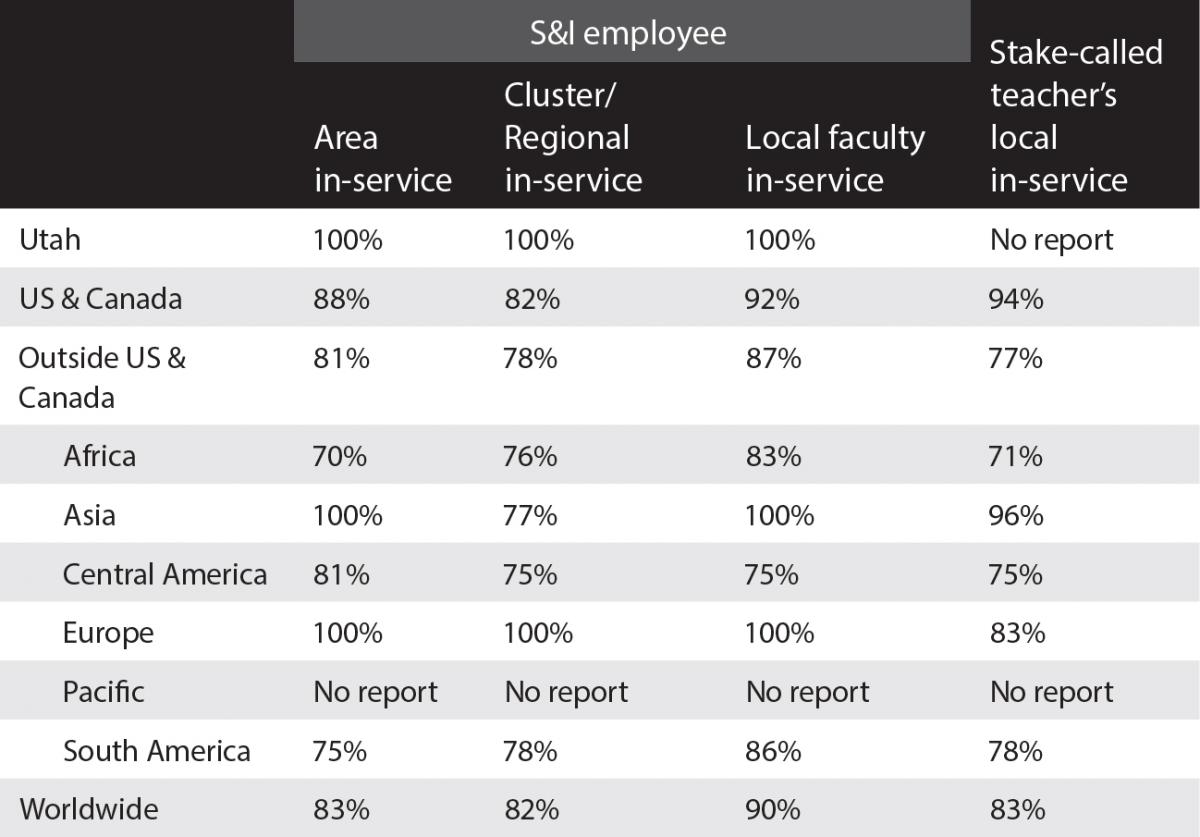 Table 3: Frequency of in-service meeting attendance
Table 3: Frequency of in-service meeting attendance
Note: Attendance frequencies are estimates at best and are based on survey responses.
Respondents indicated they were unable to attend in-service training for the following reasons: work and calling scheduling conflicts, distance, or other personal issues. One stake-called teacher said, “I attend about 75 percent of all in-service training due to my work schedule.” Another reported, “I need to go about 100 kilometers exclusively just to attend the in-services.” Others noted scheduling conflicts as follows: “Most in-service meetings . . . [are] on Saturdays, which sometimes conflicts with other ward assignments, meetings, or personal issues,” and “Some of our in-service meetings are held during our stake leadership meetings because our stake is geographically large, but I also hold a stake calling . . . so I miss those [in-service trainings].”
Length of In-Service Meetings
Generally, S&I teachers reported that the length of in-service meetings were shorter for those inside the US and Canada. (see table 4). In addition, in-service meetings for stake-called teachers were typically between one and three hours, while in-service meetings for S&I employees were longer.
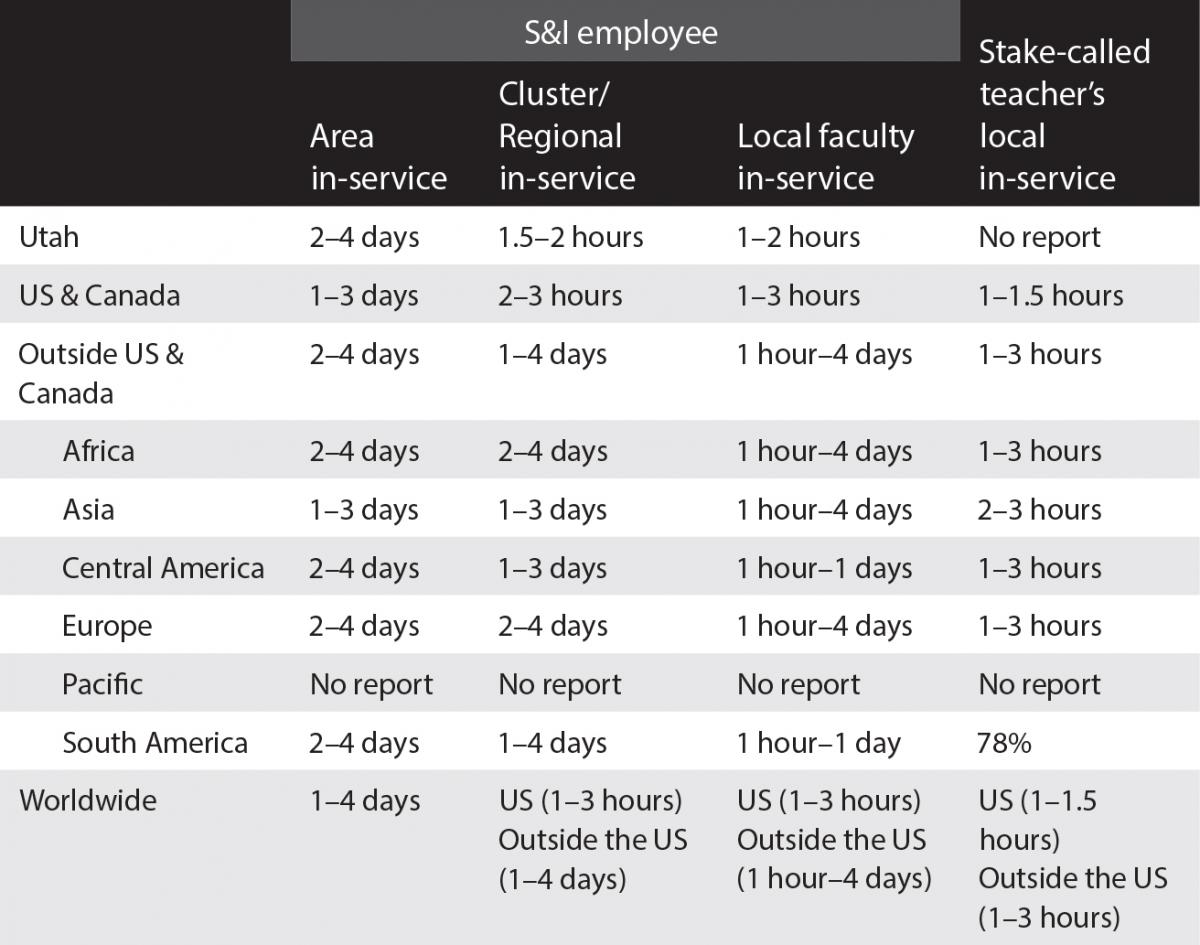 Table 4: Length of in-service meetings
Table 4: Length of in-service meetings
There appeared to be a correlation between the frequency and length of in-service meetings. In the US and Canada, frequency was higher and length was shorter. Outside the US and Canada, the reverse was true; frequency was lower and length was longer. Qualitative interviews suggested that distance was a key factor. The farther teachers were geographically, the more likely that the frequency of in-service meetings decreased and length of the meeting increased.
Modes Used to Provide In-Service Training
Respondents were asked to mark all the modes—in person, over the phone, video conference, etc.—used to provide in-service training. About 99 percent of respondents indicated that in-service trainings were given in person. Some also indicated that in-service trainings were provided by telephone, skype or video conference, emails, and online training modules (see table 5). There was no significant difference between the S&I employee and stake-called volunteer teachers in regards to mode of in-service meetings, except for online training modules.
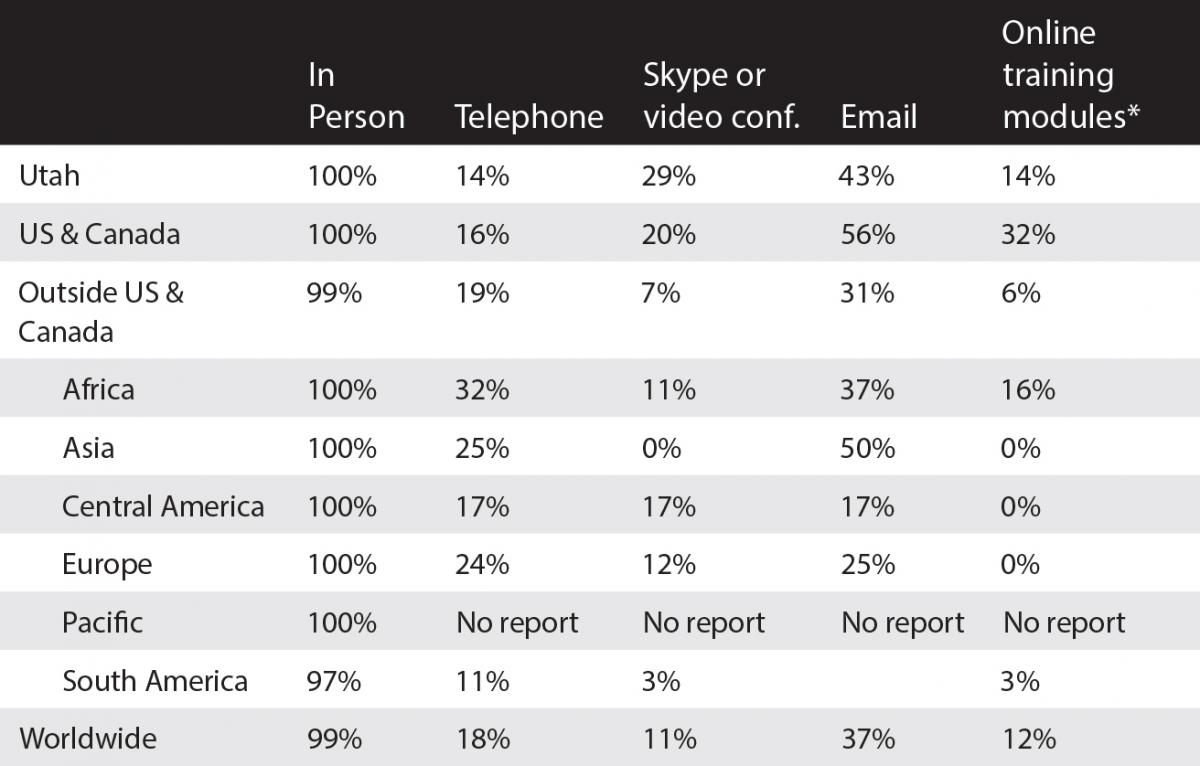 Table 5: Mode used to provide in-service training
Table 5: Mode used to provide in-service training
* Only S&I employees who were surveyed accessed online training modules
According to the survey, only S&I employees accessed online training modules for in-service training. However, interviews with coordinators in the US indicated that online training for new stake-called teachers was very important to help them train new teachers that did not attend preservice or in-service training. Interview data with coordinators also suggested that online resources could be used to communicate administrative matters with stake-called teachers online, thus allowing for more modeling and practicing of teaching skills during face-to-face in-service meetings. A coordinator shared that the “online training for new teachers is great! [I] have them all attend the new teacher online training . . . We are spread out and we don’t have all the volunteer teachers in one place, so the online in-service for new teachers is great! That is what I point them to and [I] have them do the training online.”
Time Spent on In-Service Training Items
Worldwide, in-service meetings spent 16 percent of the time allotted on administrative matters, 27 percent on content mastery, 28 percent on explaining teaching skills, and 29 percent on modeling and practicing teaching skills (see table 6). There was no significant difference between responses from S&I employees and stake-called teachers in regards to the time spent on each training item. In addition, teachers generally agreed that the appropriate time was spent on each item (see table 7).
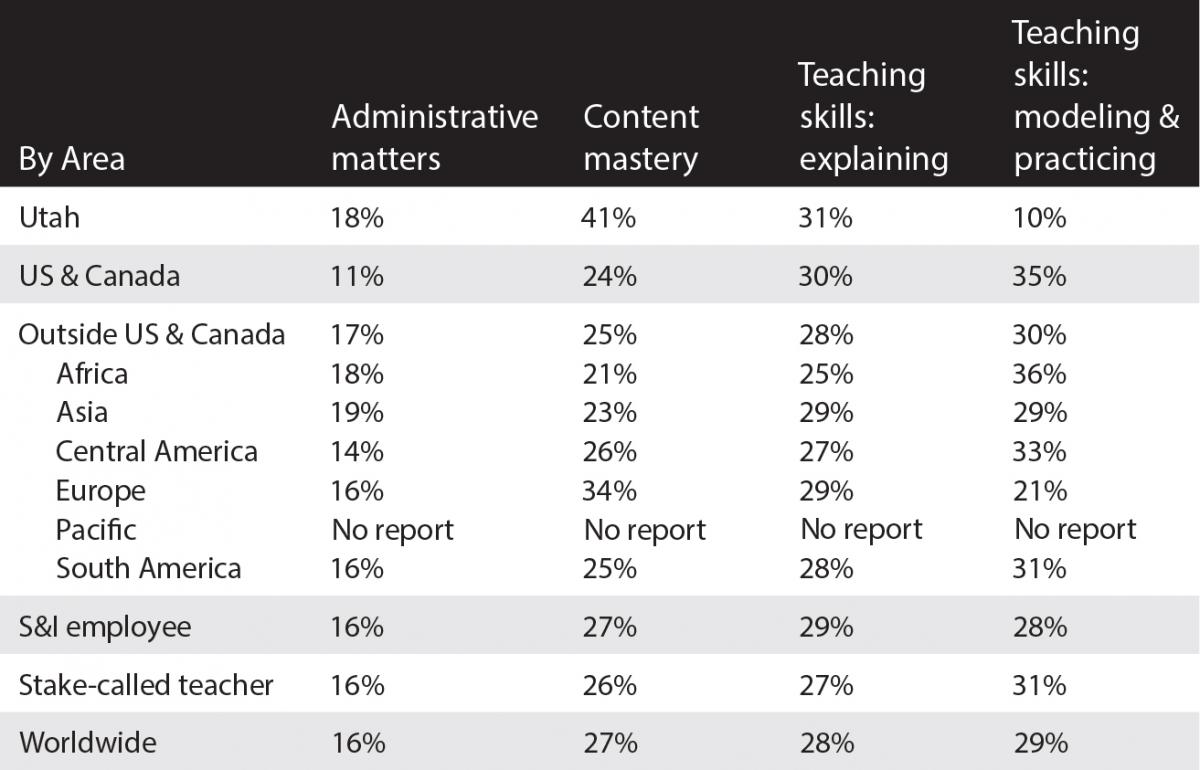 Table 6: Time spent on in-service training items
Table 6: Time spent on in-service training items
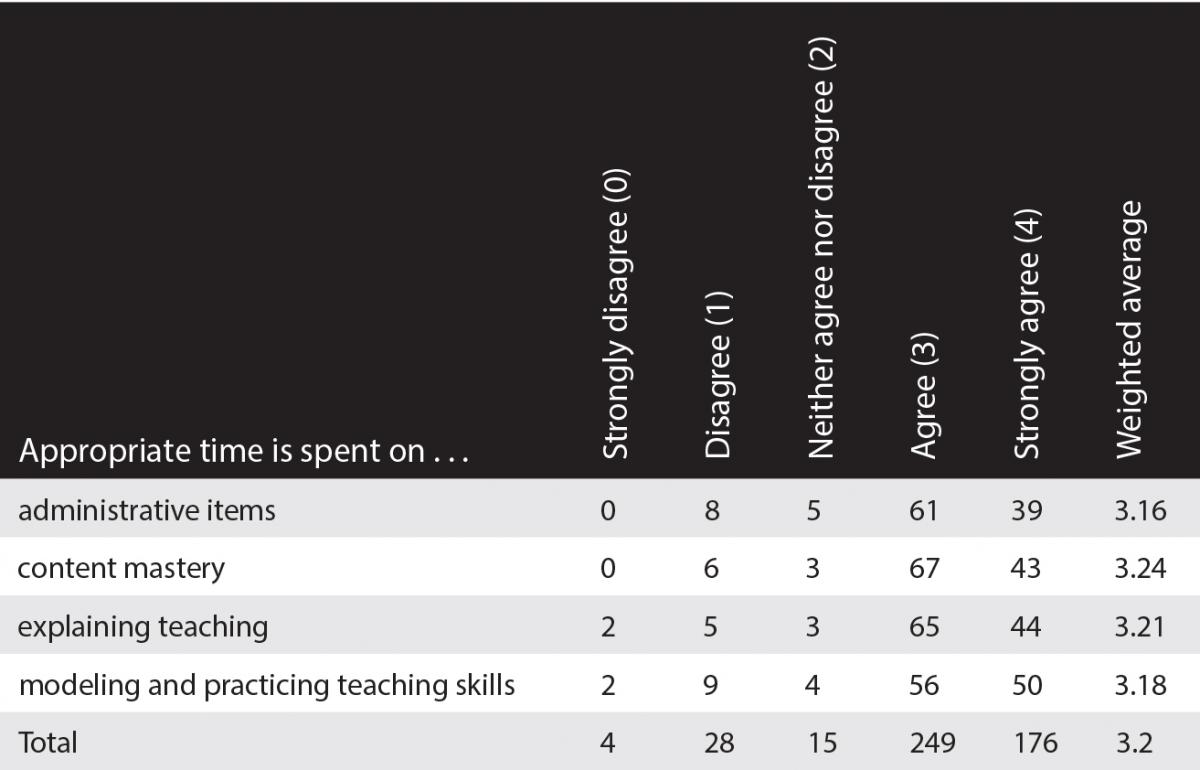 Table 7: Rating of appropriate time spent on in-service training items
Table 7: Rating of appropriate time spent on in-service training items
S&I teachers said, “I believe that the time we spent for in-service was very [well] used,” and “I believe that the time allocation was adequate.” However, some respondents wished for more time for content mastery, while others expressed a desire for more time with modeling and practicing teaching skills. S&I teachers explained that “less time should be used in administrative matters and more time is needed for content mastery,” and that “more time can be spent in modeling and practicing teaching skills.”
What are the Perceptions of S&I Leaders and Teachers Regarding How These In-Service Meetings Assist Them to Achieve the S&I Objective and Goals?
In-Service Meeting Ratings
Overall, all respondents agreed that in-service meetings helped them accomplish the S&I objective and goals, met their needs and expectations, and shared materials that were pertinent and useful (see table 8). Respondents also agreed that in-service meetings facilitated networks with other teachers, inspired and motivated them, and helped them to be a more effective teacher.
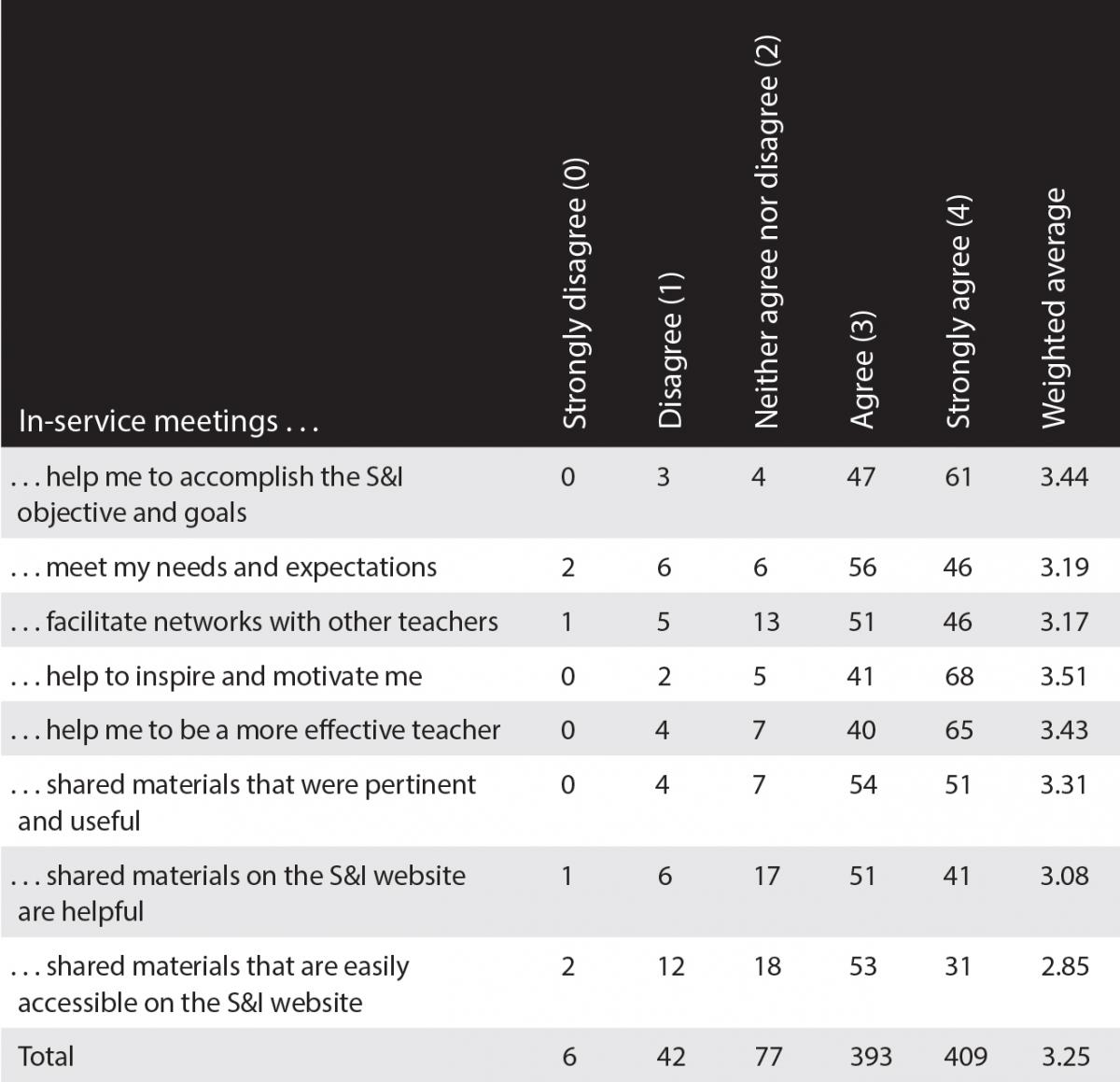 Table 8: In-service meeting ratings
Table 8: In-service meeting ratings
Interviews also revealed that coordinators felt isolated and looked to in-service meetings with other S&I employees as a time to network and feel connected. A coordinator explained that “coordinators are isolated and alone a lot. Great thing [it] is to get together with others and to bounce ideas. . . . [when we] get together . . . you are lifted, you gather new knowledge on administrative, content mastery, etc. . . . Is it worth the time to get together? Yes, definitely.. . . When we get together as a cluster or area, it is huge and a big deal!” Moreover, interviews revealed that coordinators desired additional help and preparation before becoming the in-service meeting leader. One coordinator said, “I wished someone had modeled in-service for me. . . . New coordinators need more training before they go out to coordinate . . . instead of leaving us on our own to figure it out.”
The ease of accessibility of materials on the S&I website received the lowest rating (a weighted average of 2.85 out of 4). Many were grateful and positive about in-service training and the resources available, however, there were also many concerns over the accessibility of S&I materials and the availability of translated materials on the S&I website to assist with in-service trainings and other needs. One coordinator said, “The in-service materials [on] the web site are easily accessible, but the majority of what we could use are not translated.” Another coordinator added, “I [am] so grateful for in-service training; it’s help[ed] me to be [a] better . . . S&I teacher so I can learn with my teachers and materials [on] the website. Sometimes it’s hard because it [is] all in English, so I have to translate so I can give [it] to all [the] teachers.”
The majority of these concerns came from stake-called teachers in the US or those outside the US. Respondents’ concerns regarding the accessibility of the S&I website related to the ease of accessibility of resources by stake-called teachers in the US, or availability and timeliness of translated materials outside the US. In Africa, for example, they would still prefer printed materials and a DVD due to internet connectivity issues.
Overall Impression and Suggestions
Overall, S&I employees and stake-called teachers rated in-service meetings as “good” or “very good,” giving a total weighted average of 3.86 out of 5 (see table 9). They also shared their desire for more modeling and practicing of teaching skills. A coordinator said, “We should do more of modelling and practice. Then we could visit one-on-one with our teachers and listen to them.” Another teacher concurred by adding, “I feel it will be more helpful if more time is devoted to [the] practice of teaching, and if in-service materials will be given in advance for teachers to prepare, that will improve the quality of teachers also.”
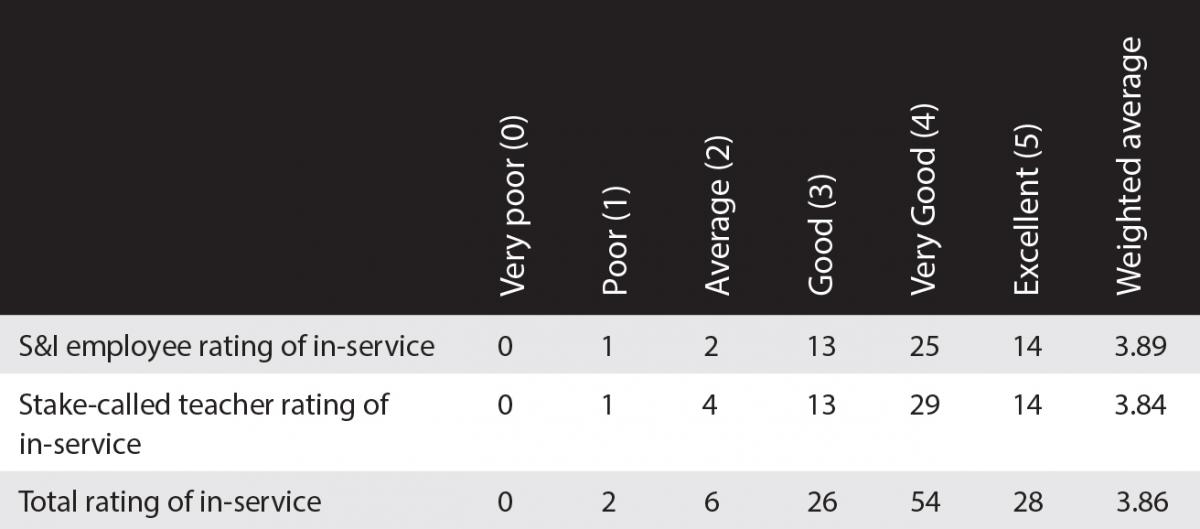 Table 9: Overall in-service meeting rating
Table 9: Overall in-service meeting rating
In addition, feedback from respondents was coded and grouped into various categories. The most common suggestions are listed below in order of most frequently coded responses. Thereafter, these responses were further segmented to highlight area-specific suggestions. Overall coded responses were ranked and included:
- Simplify resources on S&I website to make materials more practical for new converts and volunteer teachers.
- Provide translated materials in a timely manner and communicate when they are available, thus avoiding need for materials to be translated locally.
- Provide training for new coordinators on how to conduct meaningful in-service training that fits local circumstances.
- Limit isolation for those in remote areas by providing opportunities to interact with other colleagues through online forums to share and post ideas (e.g., Yammer).
- Consider various internet challenges and provide video files that can be downloaded for some areas, or DVDs instead of online materials for areas without internet access.
- Improve search function, facilitating ability to quickly and effectively find resources in the S&I website (primarily in the US and Canada).
Area-Specific Suggestions from US and Canada
In the US and Canada, the top suggestions included improving the search function on the S&I website, limiting isolation for those in remote areas, and providing training for new coordinators on how to conduct meaningful in-service training.
An area director in a US Utah area said it was difficult “not knowing where things are” on the website and indicated that improving the search function would be helpful. A coordinator in the US East area added, “I enjoy having great resources of talks and other presentations, . . . [but] it is not always easy to find these resources in a quick and efficient way.” In regards to limiting isolation, a coordinator in Canada said, “I look forward to faculty in-service as it permits me to observe other perspectives. . . . I serve in a remote location by myself and so any interaction with colleagues is welcome and enriching. . . . [We need] more regular interaction between colleagues and sharing of resources and ideas.”
A seminary principal in a US Utah area recommended that S&I could continue to “provide models and presentations that could be used for in-service discussions, practice, developing skills, etc.” A coordinator in the US East area said he “wished someone had modeled in-service for me. New coordinators need more training before they go out to coordinate.” A coordinator in the US California North area said, “Continue to provide information that others are finding successful to help us in our areas.”
Outside the US and Canada
Outside the US and Canada, the bulk of their suggestions included the simplification, accessibility, and timely translation of materials on the S&I website to support in-service meetings and stake-called volunteer teachers. Their comments included, “Please offer materials and software for in-service translated in my language so that we can use it for our local in-service,” and “There are a lot of materials that are only in English, and as you put materials in Spanish it will be a great help to us, all the talks, class materials, etc.” Others added, “I'd like to have [S&I broadcasts] in Thai, maybe in the message so I can use [them] in my in-service training because . . . my teachers can't speak English,” and “The only thing I can think is to have more materials in Portuguese about teaching to share with our volunteers--some kind of online training for teachers in Portuguese, as we already have in English.”
Area-Specific Suggestions from Africa
Simplifying resources on the S&I website and consideration for internet challenges were the two most common suggestions from Africa. The Africa Southeast area director indicated that “most teachers [in Africa] are converts and don’t have advance[0] education beyond high school.” He also added that “internet base[0] in-serv[ice] . . . is not accessible, [and] 90 percent [of volunteer teachers in Africa] don’t have access to internet, so this module does not work; log[ging] in to find things does not work, cost[s] teachers too much to access the internet, and they don’t have money for it. . . . [We] don’t need more; there will be more confusion. Simplicity would be better.”
A coordinator in the Congo Africa Southeast Area, added that “many [volunteer teachers] don’t have access to internet . . . so we need to think of how the volunteer teacher can get to it.” He said, “We can’t get online or internet access; please keep sending the DVD[s]. [In-service training leaders] cannot access [the] internet, but DVD[s] can work in our DVD players to show the teachers and give them the information.” A coordinator in South Africa, Africa Southeast area, explained that “the online in-service training resources should be put on DVD and made available to all S&I Coordinators/
Area-Specific Suggestions from Asia and the Pacific
In Asia and the Pacific, the most common suggestions included simplifying resources on the S&I website, providing translated materials in a timely manner, providing training for new coordinators, and considering various internet challenges for certain locations.
The Asia area director said that the “S&I website is too complicated. . . . [A] search function would be helpful. . . . [The] website is too much for our coordinators.” He also added, “[Online in-service trainings are] helpful to those who understand English really well. . . . [The] resources are wonderful, but [they have not been] available in different languages for coordinators and volunteer teachers in Thai, Chinese (Mandarin & Cantonese), Cambodia, Mongolian, [and] Indonesia[n].” A coordinator in Taiwan said, “[We need] talks of Apostles at beginning of the year, like Elder Bednar’s would be most helpful, but no Chinese translation, so we end up translating locally to provide for the students in our area. . . . Translation always [comes] late for us to use . . . even short videos we don’t have [a] translation [for]. . . . [We] never know when the translation comes. . . . [One] has to check the website to see, [but] we don’t have time to keep looking.”
According to the coordinator in Hong Kong, new coordinators “are struggling to know what to do in their preschool and in-service training. . . . I think our coordinators need help in how to provide monthly meaningful teacher training. . . . We know the objectives and goals . . . [but we need] support in terms of mastering the content, modeling, [and] training on interpersonal skills. . . . The online training does not fit into our local circumstances always.” A coordinator in Asia suggested an online forum to help share “some case studies [and] success stories.”
In the Philippines, a coordinator in Los Baños said, “The materials you keep developing online could be reproduced on DVDs for distribution because not all teachers have access to internet, and I meet them once a month only.” Another coordinator from Bacolod, Philippines, suggested that webcasts or other videos should be easily downloadable. Moreover, the institute director from Bacolod, Philippines, added, “I wish that all the videos in the resources area [were] downloadable. Not all the chapels in my areas [have] Wi-Fi. So I need to download and play the videos for them [volunteer teachers].” Finally, a coordinator in Australia suggested, “The online training broadcasts are great. Perhaps continue to move forward with developing technologies for gospel applications to keep up with youth and the YSA.”
Area-Specific Suggestions from Central and South America
The most common suggestions from those in Central and South America included similar suggestions from other areas. These included simplifying resources on the S&I website and providing translated materials in a timely manner. In addition, these respondents recognized the isolation experienced by those in remote areas and suggested online forums, such as Yammer.
The regional director for Brazil South explained the challenge and need to simplify resources as follows: “[The] biggest challenge for the volunteer teachers is that they have their day-to-day work, family, etc. . . . [It] needs to make things easier, simplify . . . [and] make it practical.” For example, he noted that “attendance report is difficult and . . . [needs to be] simpler for the teachers.” He also said in regards to materials and resources that “if not in Portuguese, then there is nothing for them. . . . They want it in Portuguese, not English.” A coordinator and institute director in Costa Rica said they “need videos in Spanish to use for teacher in-service . . . the training online for teachers is great, but it is only in English. This limits the majority of our teachers to be able to gain help from it.” A coordinator in Honduras said that “by not having them available in Spanish, these valuable resources are of little help.” A coordinator in El Salvador said that it would be “a huge help if you could translate many of the messages.”
Area-Specific Suggestions from Europe
Specific suggestions from Europe focused on providing translated materials in a timely manner, limiting isolation for those in remote areas, and providing training for new coordinators on how to conduct meaningful in-service training.
An area director in Europe noted that “many [videos and broadcasts are] not available in time for the school year to start. . . . Other languages will [be] provided later, but no timeline to know when, or announcement when it will come. . . . [we] end up doing local translation: then it is translated twice.” He added that “[the] best translation [is] when it is live, because [we] don’t know when it will come. . . . If [the broadcast] is for volunteer teachers, [we] need [it] in languages.” The area director in the Europe East area reported that “many don’t get on the online training because their English is not very good. . . . [The] website is improving, but [is] very confusing still how to use. . . . [For] 450 vol[unteer] teachers, most don’t speak English.” He also explained his use of “phone call or skype or video . . . [because] many coordinators feel lonely and isolated, so it is important to keep in touch.” Finally, the coordinator in Bulgaria said, “I would like to see in-service meetings for volunteer teachers in other areas, especially where we have [a] daily program with stake-called teachers. Maybe videos of such meetings could help us to get new ideas.”
Summary
S&I in-service training meetings are an important and integral part of helping seminary and institute teachers to “elevate Gospel teaching and learning” and in “teaching in the Savior’s way.” The findings from this study helped to better understand how these in-service meetings are operating and functioning globally, while also exploring the perception of S&I leaders and teachers regarding how these in-service meetings assist them to achieve the S&I objective and goals.
In the US and Canada, in-service meetings for S&I employees are held more frequently and are shorter in length than those outside the US and Canada. Globally, time spent during in-service meetings includes 16 percent of the time on administrative matters, 27 percent on content mastery, 28 percent on explaining teaching skills, and 29 percent modeling and practicing teaching skills. Teachers generally agreed that appropriate time was spent on each training item. They also felt that it helped them accomplish the S&I objective and goals and met their needs and expectations, and that materials shared were pertinent and useful. The lowest rating was for the S&I website (a weighted average of 2.85 out of 4) due to accessibility of resources and concerns over the timeliness and availability of translated materials. Notwithstanding, overall quality of in-service training was rated as “good” or “very good.”
A global overview also indicated that in-service meetings were typically held monthly for stake-called teachers—nearly all in person. Attendance was generally lower for stake-called teachers than S&I employees due to distance, work, Church callings, and other demands on their time. Some areas used telephone, video conference, or online training on a limited basis to provide additional training and support.
Overall feedback from S&I leaders and teachers worldwide provided the following suggestions to help improve local in-service meetings. First, simplify the S&I website to further facilitate accessibility of online materials for new converts and volunteer teachers. Second, continue to improve the timeliness and availability of translated materials on the S&I website to benefit those outside the US, provide more training for new coordinators on how to conduct meaningful in-service training that fits local circumstances. Next, use new and existing technology to help S&I leaders and teachers share and stay connected, thus reducing isolation and improving in-service training opportunities. Finally, recognize that certain areas may need DVDs instead of online materials due to limited or lack of internet access.
Efforts from those at the S&I Central Office continue to help S&I teachers globally. These include efforts to redesign and simplify the S&I website and translate new teacher training and other online resources into a number of languages. These and other efforts help to address some of the challenges experienced by study participants, further expanding the access and use of online training resources for S&I teachers globally. Ultimately, efforts to improve in-service trainings are “intended to improve teaching, increase gospel knowledge, and help teachers learn how to administer in seminaries and institutes.”[4]
Notes
[1] Seminaries and Institutes of Religion, The Objective of Seminaries and Institutes of Religion, (The Church of Jesus Christ of Latter-day Saints, 2009).
[2] The Church Education System, Administering Appropriately: A Handbook for CES Leaders and Teachers (Salt Lake City: The Church of Jesus Christ of Latter-day Saints, 2003), 33.
[3] The Church Education System, Administering Appropriately: A Handbook for CES Leaders and Teachers (Salt Lake City: The Church of Jesus Christ of Latter-day Saints, 2003), 34.
[4] The Church of Jesus Christ of Latter-day Saints, Gospel Teaching and Learning: A Handbook for Teachers and Leaders in Seminaries and Institutes of Religion (Salt Lake City: The Church of Jesus Christ of Latter-day Saints, 2012), 49.
